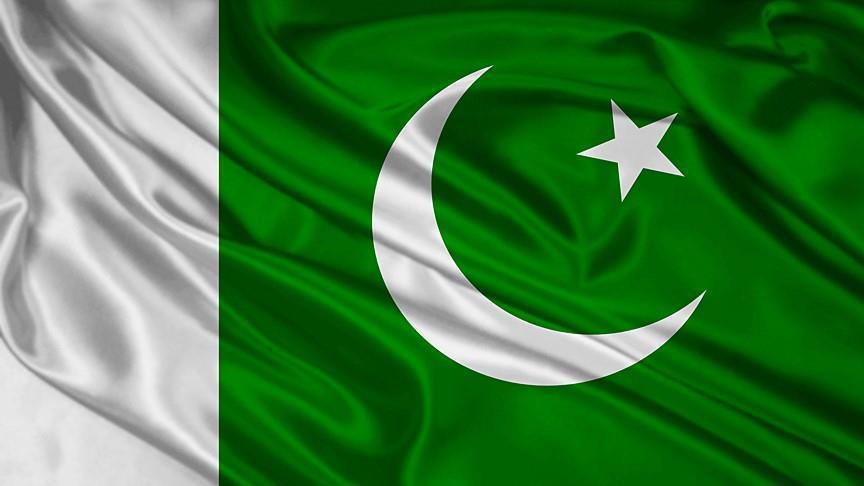Pakistan’s once-vibrant media industry in sharp decline
Thousands of media workers have been laid off in recent months following closure of several newspapers and TV channels

Pakistan
By Aamir Latif
KARACHI, Pakistan
Pakistan’s media industry, once viewed as among the most vibrant in South Asia, is shrinking at a fast pace with thousands of journalists and workers laid off and several outlets shut down in recent months.
The country’s ailing economy, coupled with the withdrawal of government subsidies and dwindling advertising revenue, have forced even big and stable media groups to shutter their publications and lay off journalists.
The biggest causality is the Herald -- the country’s oldest and most reputable monthly political magazine --- which will publish its last edition this month. The Herald belongs to the Dawn Media Group, one of two major media groups in Pakistan, and is known for its critical reporting on political and security issues.
Earlier this week, the Jang Group -- the country’s largest media group -- shut down its seven publications, including its largely circulated Daily News (English) and Awam (Urdu), leaving more than 1,400 journalists and related staff jobless in one day.
The group has also shut down the Peshawar and Faisalabad editions of its Jang newspaper, the country’s largest Urdu daily.
Express Media Group and Dunya Media Group -- the third and fourth largest media groups -- have also laid off over 200 journalists apart from cutting the salaries of remaining workers by 15 to 35 percent.
According to the Pakistan Federal Union of Journalists (PFUJ), an umbrella organization of different journalist unions, over 2,000 journalists have been laid off following the closure of publications and retrenchment schemes in recent months.
“This is not an overnight crisis. Instead, this is part of a long-drawn-out censorship campaign aimed at shrinking the booming media [industry] and gagging freedom of
He was referring to the country’s powerful military and civil establishment, which is accused by the journalist unions of orchestrating a calculated campaign to cut the media industry to size so that it can be easily managed.
Home to over 200 million people, Pakistan had only one state-run TV channel and a couple of radio stations until 2001. But in the next eight years, the number of private TV channels rose to 50, thanks to the “open media policy” of former military ruler Gen. Pervez Musharraf.
The media boom benefited a certain class of journalists, mainly TV hosts, who earned huge salaries and benefits and also attracted a large number of young people to journalism.
Dozens of universities established media science departments to cope with the needs of the then-booming media industry.
But currently, only a few channels manage to pay salaries on time -- so much so that the largest, Geo TV, has not paid its staff for the last three months, shifting the blame to the curtailment of government and private advertising.
“The media industry is on the verge of collapse because of the Information Ministry’s anti-media policies,” Sarmad Ali, president of the All Pakistan Newspapers Society (APNS), the representative body of newspaper owners, told Anadolu Agency.
“The current government intends to give only 300 million rupees in advertisements to the newspapers per year compared to 3 billion rupees during the previous government. The government claims it was a bribe by the last government, but I would say how would this government ensure freedom of
“The government is not paying outstanding advertising dues of 8 billion rupees that it owes to the newspapers, despite repeated promises.”
-‘Wrong business model’
Until the end of the previous government, the annual size of the media industry was around 80 billion rupees (around $600 million), with the government and private sector each sharing half.
But the government of Prime Minister Imran Khan has curtailed its share from $300 million to a mere $55 million.
In addition, the fast depreciation of the rupee against the U.S. dollar has doubled the price of newsprint, making it impossible for several small papers to continue publishing.
“The media industry itself is threatened by the wrong business model adopted by the owners. This is neither viable nor sustainable,” Information Minister Fawad Chaudhry told reporters.
Accusing the previous government of increasing the official advertising budget from 10 billion rupees to 35 billion rupees, he deemed the “disproportional increase” responsible for the current media crisis.
“The current salary structure, especially in electronic media, is irrational. One host is drawing a salary equal to that of 100 employees. This will not work in the long term,” he said.
“The government cannot spend taxpayers’ money to help the media come out of this crisis. Nowhere in the world is taxpayers’ money spent to support private businesses.”
Chaudhry said the government could not spend more than 8 billion rupees for official advertisements due to the country’s “under-pressure” economy.
Butt disagreed, however, citing the BBC and Voice of America as examples, which are supported through taxpayers’ money.
“On the one hand, the government expects the media to counter the foreign propaganda and cultural invasion, while on the other, it is not only reducing its own
Sharing a similar view, Sarmad Ali said: “In our last meeting with the prime minister in October, he ordered the release of outstanding dues and the withdrawal of a 5 percent regulatory duty on newsprint, but nothing favorable has happened so far.”
“The government is gagging the media, leaving us with no other option but to shut down our publications.”
Anadolu Agency website contains only a portion of the news stories offered to subscribers in the AA News Broadcasting System (HAS), and in summarized form. Please contact us for subscription options.







